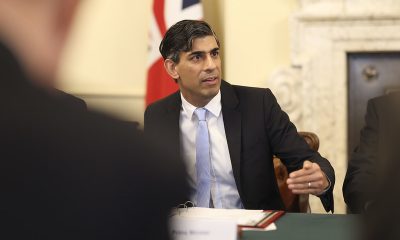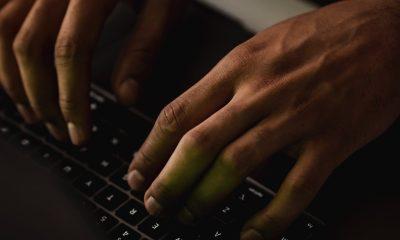Sports
Forced Sports Timeout Puts Squeeze on College Coffers, Scholarships and Towns

FILE: Death Valley; Clemson Football (File Photo By Tony Crescibene, CC BY-SA 3.0)
On college football Saturdays, tiny Clemson, South Carolina (pop. 17,000), turns into a city of 150,000 when fanatics pour into downtown and swarm Memorial Stadium, home of the Tigers. Some don’t even have a ticket to the game, but they come with money to burn.
“It’s well north of $2 million in economic impact per game,” said Susan Cohen, president of the Clemson Area Chamber of Commerce. Hotels sell out rooms at $400 a night; some shops bring in 50% of their year’s revenue during the seven home-game weekends. Add in massive broadcasting contracts and apparel deals that enrich schools directly, and there are hundreds of millions of reasons that universities with large athletic departments and the towns they occupy don’t want to lose even one season to COVID-19.
And that’s just the dollars. There is also the intangible value of a community rallying behind a shared passion in particularly bleak times — to say nothing of the life-changing impact of scholarships to students who might have no other chance to shine or get a college education.
Unfortunately, the coronavirus dominates the conversation. Sports like football offer an ideal environment to spread a highly contagious disease: Players are in close contact for long periods inhaling one another’s sweat and saliva droplets. Even with empty stadiums, players can still infect one another, their team staffs and the communities where they study and live.
College sports are a multibillion-dollar industry, but in 2020 they’re being brought down by the same forces that have hobbled the rest of the economy. University presidents and athletic directors are playing defense amid the constantly changing landscape of the pandemic, rather than driving any sort of solid plan forward.
“We’ve developed seven different budget scenarios, ranging from pretty normal to sports being out of the picture for a long time, and one of those, hopefully, will be close to what we are ultimately dealing with,” said Kevin Blue, athletic director at the University of California-Davis.
A loss of anticipated fall revenue will hurt athletic departments, especially at public schools, which spend most of their budgets every year. Uncertainty over the season has derailed the plans of scores of current and incoming college athletes.
When the NCAA in March canceled its upcoming championships, it granted the athletes in all spring sports an extra year of eligibility and eased some scholarship limits. The association could do the same if fall sports are canceled — but it’s up to the schools to decide whether to offer extra scholarships. Some say they won’t. “Those are dollars we don’t have,” Long Beach State University athletic director Andy Fee told The New York Times.
Christian Molfetta, a graduating senior and catcher on the Stanford baseball team, had scholarship offers from multiple schools to play for them next season as a graduate transfer. But with so many of those programs’ older players now returning for another year, “most of those offers disappeared,” Molfetta said. He plans to play for the University of Michigan, which will cover the cost of his books as he pursues a master’s in kinesiology, he said.
Other athletes have been told they may return without their scholarships, which may range from a small stipend to tens of thousands of dollars, while some are getting money that would’ve gone to incoming freshmen, who are suddenly denied the financial aid they had been promised, Molfetta said. The trickle-down effect is wicked. “We’re getting questions from kids in the 2023 and 2024 recruiting classes, asking if there’s going to be any scholarship money for them,” said Pat Bailey, assistant baseball coach at Oregon State University.
When the pandemic swept in this spring, college football cheered for business as usual. Americans are going to “rise up and kick this thing in the teeth,” Clemson head coach Dabo Swinney predicted in April. Then 37 of his players tested positive during one of the outbreaks that also have been documented at the University of Texas, Kansas State, defending national champion Louisiana State University and other schools.
Now, the reality of a fall without sports is sinking in. Already, the Ivy League and many smaller conferences have canceled their fall schedules. Members of the so-called Power Five conferences — the SEC, Big Ten, Pac-12, Big 12 and ACC — have waffled, holding out for abbreviated seasons while discussing how to restrict travel and exposure.
The cost of regular COVID-19 testing for entire rosters of athletes, plus coaches, staff and support personnel, would swamp all but the largest university sports budgets. And what the tests reveal — and how quickly — means everything: If schools don’t know on the day of a game who is infected, the idea of going forward is nonsensical.
Professional sports clubs can pay for all the testing they want, and they have the ability to closely monitor and control the movement of their players and staff. But “college sports occur on college campuses, where people arrive from all over,” said Zachary Binney, an epidemiologist at Emory University’s Rollins School of Public Health in Atlanta.
Testing an entire football team and staff to detect infection could cost anywhere from $20,000 to $25,000 a week, said Binney. Tests must be done the day before a game, with a quick turnaround of the results, or else they’d be meaningless, he said. “You would have no idea whether you were about to seed an epidemic on somebody else’s campus.”
The NCAA recently released guidelines that call for testing within 72 hours of competition in “high-contact risk sports” like football. NCAA President Mark Emmert stated recently that “the data point in the wrong direction,” but his organization has been conspicuously absent from most of the conferences’ conversations about the fall season, leaving university presidents and athletic directors to hash it out for themselves.
The result is a patchwork of conflicting decisions, and the dividing line is usually money. For conferences like the Patriot League, for which football revenue is not major, canceling the season was perhaps an easier call. “It is clearly the right thing to do,” said Colgate University athletic director Nicki Moore, noting that athletes regularly travel to other campuses and may risk infecting others when they return.
For the Power Five, the cancellation of football would be a budget-breaker, with potentially $4 billion in revenue at stake, money that helps keep some athletic departments afloat while minimizing the annual losses of others. Still, many of these schools also have the resources to conduct repeated tests on entire rosters of athletes and staff, totaling more than 100 people — and have begun to do so.
Scott Swegan, director of communications for the Stanford football program, said athletes there have been tested regularly since returning for summer workouts July 1 “and will continue to be tested weekly throughout the season.” The program is looking at several full face-shield or mask options to fit the players’ helmets, should the Pac-12’s plan for a shortened, conference-only season be realized, he said.
Any return to normalcy, of course, depends on COVID-19 and the nation’s response to it.
“The virus doesn’t care what you want or how much you wish you could do something. It does not care about your convictions,” Binney said. “It only cares about opportunity.”





















